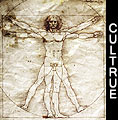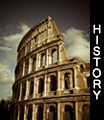Introduction
Todi is a town in the province of Perugia (Umbria) in central Italy. The charming old town is perched on an attractive site overlooking the east bank of the river Tiber.
Todi has been dubbed the world's most livable city, based on a report in the early 1990's by Richard S. Levine, a professor of architecture at the University of Kentucky, because of its scale and its ability to reinvent itself over time. After that, the Italian press reported on Todi as the world's most livable city.
.
.
.
According to the legend, Todi was founded by the Veii Umbri on the site where an eagle dropped a rough cloth taken from their table. It is this story that inspired the town's coat of arms: an eagle with outstretched wings grasping a cloth in its claws. Another myth claims that Todi was foounded by Hercules himself who killed Cacus there and the town was therefore called Eclis from Ercole. The city center was founded only in the 7th-6th century BC. The etnical composition of the population was of osco-umbrian, etruscan and celtic origin. Contrary to many other Etruscan cities Todi maintained an important role well into the Roman area. Todi's golden age was in the 13th century as attested by the city's main sights.
A few traces of wall are left from the Umbro-Etruscan period, around the Porta Libera, In Via Paolo Rolli, in Via delle Mura Antiche, in Via del Montarone and at the Porta Marzia, where a highly decorative loggia overhangs the gate, which is one of the most interesting architectural elements from that period and is the only part of the original circle of walls still intact.
Todi lost its status of free town in 1368 when the city was annexed to the Papal State under the Pope's governor. From the beginning of the 15th C. Todi entererd a slow period of decline until Angelo Cesi assumed the bishopric. Although reduced to half of its former population due to the plague of 1523, under bishop Angelo Cesi Todi relived a brief period of splendour. He rebuilt several edifices and added new palaces, like the Cesia Palace at the foot of the Duomo steps.
Todi is the birthplace of the Franciscan poet Jacopone da Todi, who is buried in a special crypt in the church of S. Fortunato.
Main Sights
Piazza del Popolo
Square at the centre of Todi, surrounded by buildings evidencing the town's flourishing commercial life in the Middle Ages. It was cited by the German historian Ferdinand Gregorovius as one of Italy's most beautiful main squares. At Roman times the Roman Forum used to be there.
The 13thC Gothic Palazzo dei Priori was formerly the seat of the governor (podestà). It is famous for its oddly shaped trapezoidal tower. The facade bears a bronze eagle made by Giovanni of Giliaccio, cast between 1339 and 1341 and symbol of the town. The Lombard-Gothic style Palazzo del Popolo, one of the oldest communal palaces of Italy (1213), houses a Hall of Stones (Sala delle Pietre) and a museum of Etruscan and Roman antiquities.
History
Historical Todi was known by the Romans as Tuder, but the name probably stems from the Etruscan tular, meaning "border". Situated close to the Tiber river the city controlled the commerce between Etruria and the Osco-umbrian region.














